Wiring running lights on tow mirrors is an essential task for truck owners who wish to enhance visibility and safety. These lights act not only as a functional upgrade, illuminating your vehicle’s presence on the road, but also as an aesthetic improvement, giving your truck a more modern and polished look.
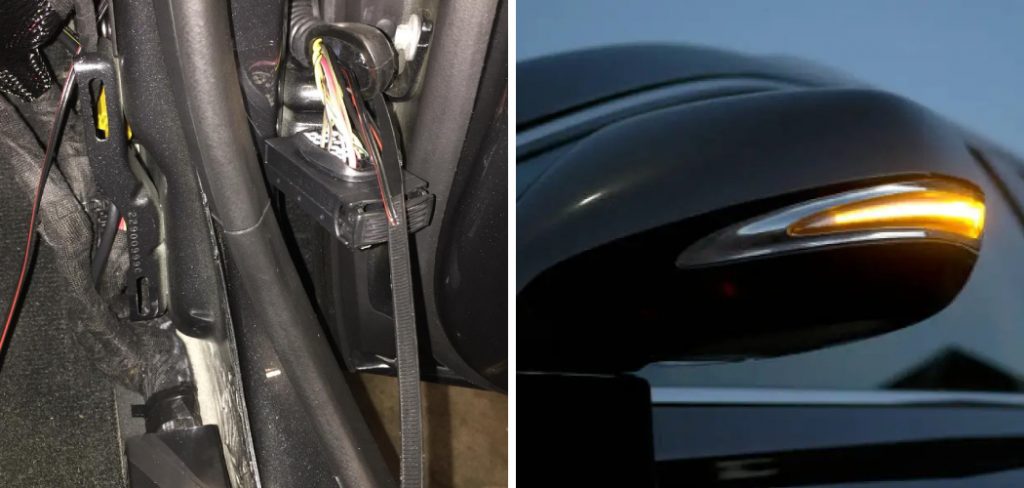
Tow mirrors with built-in running lights are becoming increasingly popular among truck owners, but many older models still require some DIY wiring to get them up and running.
This guide will walk you through a step-by-step process on how to wire running lights on tow mirrors, detailing the tools you need, precautionary advice, and the technical steps to ensure that your new running lights operate seamlessly and reliably. Whether you’re a seasoned mechanic or a DIY enthusiast, this article will provide valuable insights to assist you in this endeavor.
What Are the Benefits of Tow Mirrors?
Tow mirrors are essential for truck owners who haul trailers or large loads. These extended mirrors provide a wider field of vision, allowing the driver to have a better view of their surroundings and any potential hazards. Additionally, tow mirrors can be adjusted to provide an optimal viewing angle when towing larger objects such as boats, campers, or livestock trailers.
Moreover, having proper tow mirrors installed can also prevent accidents and collisions, as they reduce blind spots and increase visibility. This is especially crucial when changing lanes or maneuvering through tight spaces.
In addition to their practicality and safety benefits, tow mirrors also add a stylish touch to your truck, making it stand out from the rest. Many models come with built-in running lights that not only enhance visibility but also give your vehicle a more modern and sophisticated look.
What Will You Need?
Before you begin the process of wiring your running lights, it is essential to gather all the necessary tools and materials. This will ensure that you have everything you need at hand and can avoid any unnecessary trips to the hardware store.
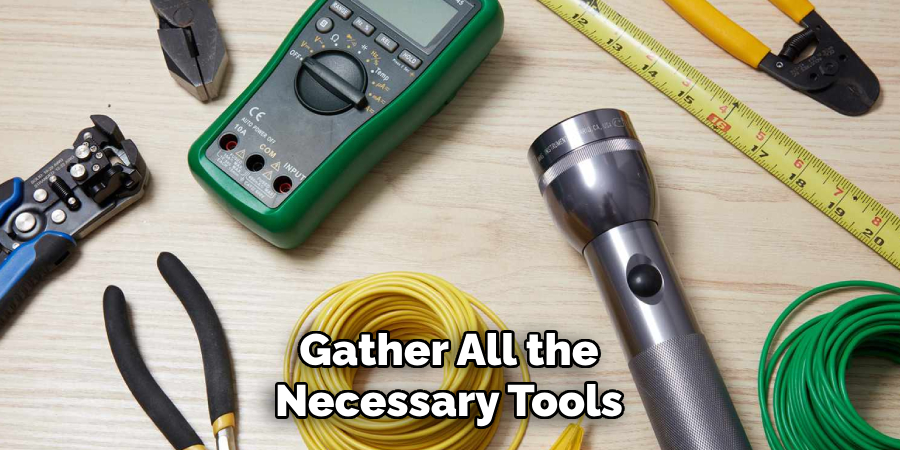
Here’s a list of items you’ll need to wire running lights on tow mirrors:
- Tow mirrors with built-in running lights
- Wire strippers
- Electrical tape
- Soldering iron and solder
- Heat shrink tubing
- Wire connectors (butt connectors, crimp caps, etc.)
- Electrical cleaner/spray
Be sure also to have a clear work area with ample lighting. It’s always helpful to have a friend or family member assist you during the wiring process, as an extra set of hands can make the job easier.
10 Easy Steps on How to Wire Running Lights on Tow Mirrors
Step 1. Turned Off All Power Sources
Before starting the wiring process, it is essential to ensure that all power sources are turned off. This includes turning off your truck’s engine and disconnecting the battery. Additionally, make sure that the tow mirrors are detached from the power source as well.
Step 2. Identify the Wires and Their Functions
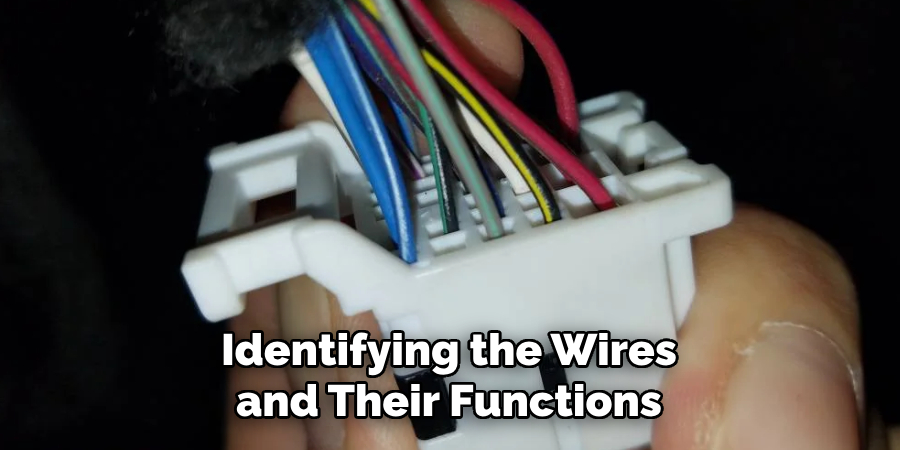
Once all power sources have been turned off, you can begin identifying the wires and their functions. Consult your tow mirror’s manual or wiring diagram to determine which wires control the running lights. Typically, these will be labeled with a “+” sign for the power line and maybe color-coded to help distinguish them from other wires, such as turn signals or ground wires.
It’s imperative to correctly identify these wires to prevent any electrical mishaps or damage to the vehicle’s electrical system. If your manual does not clearly describe the wire functions, you may need to use a multimeter to test connectivity and ensure proper identification.
Step 3. Prepare the Wires for Connection
With the correct wires identified, your next step is to prepare them for connection. Using wire strippers, carefully strip approximately half an inch of insulation from the end of each wire that will be connected. If the wires are corroded or dirty, use an electrical cleaner to ensure they are clean for a solid connection.
After stripping the wires, twist the strands together to prevent fraying, and apply solder to make the relationship more secure. It is at this point you may also slide the heat shrink tubing over the wires, which will be used to insulate the connection once completed.
Step 4. Connect the Mirror’s Running Light Wires to the Truck
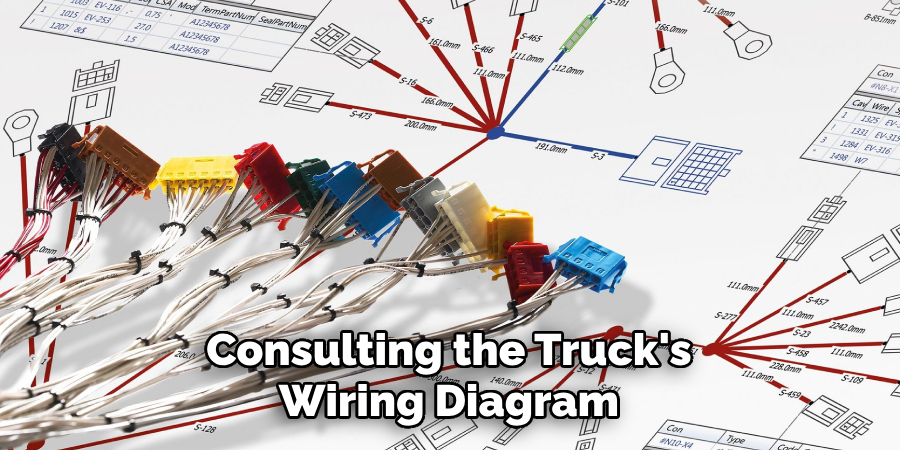
Once your wires are prepared, locate the corresponding power wire for the running lights on your truck. This could differ by vehicle make and model, so consulting the truck’s wiring diagram can assist in identifying the correct wire. Carefully connect the tow mirror’s running light wires to the truck’s power wire using wire connectors.
If you use crimp connectors, ensure they are securely crimped, or if you choose to solder the wires, now is the time to do so. After making the connections, cover them with heat shrink tubing or electrical tape to prevent short circuits.
Step 5. Test the Running Lights for Functionality
Once the connections are made, it’s crucial to test the running lights to ensure they are functioning properly. Reconnect the battery and turn on your truck’s power. Activate the running lights and observe whether the tow mirror lights turn on without any issues. It’s essential to check that they illuminate consistently and that there are no flickers or interruptions in the light output, which could indicate a poor connection.
If the lights are not operating as they should, turn off the power and recheck your links for any loose wires or bad crimps/solders.
Step 6. Secure the Wires and Insulate the Connections
After confirming that the running lights are working correctly, the next task is to secure the wiring to prevent any damage from vibration or the elements. Use electrical tape or heat shrink tubing to insulate all of the connections thoroughly. Once insulated, use cable ties to neatly secure the wires along the body of the truck, ensuring that they are away from any moving parts or areas that could potentially damage them.
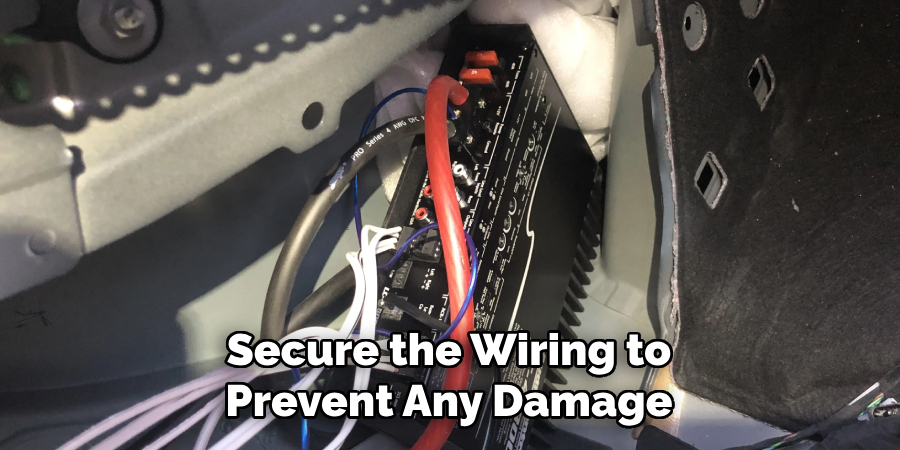
Keep in mind the areas where the wires pass through might require additional protective grommets to prevent abrasion.
Step 7. Reassemble Any Disassembled Parts
After securing and insulating the wires, it’s time to reassemble any parts that were disassembled during the installation process. This could include trim panels, covers, or any other components that had to be removed to access the wiring. Ensure everything is put back in place firmly, ensuring no loose parts could rattle or come loose while driving. This step is crucial for maintaining your truck’s aesthetic and structural integrity.
Step 8. Conduct a Final Inspection and Test Drive
Before considering the installation complete, perform a final inspection of your work. Double-check all connections for tightness, ensure all wires are correctly insulated and secured, and confirm that no tools or materials have been left in the engine bay or on the body of the truck. After the inspection, take your vehicle for a brief test drive.
This will allow you to ensure that the running lights function correctly while the vehicle is in motion and that no wiring comes loose with the vibration and movement of driving. Congratulations if everything remains intact and functioning correctly – you’ve successfully wired running lights on your tow mirrors!
Step 9. Document the Installation Process
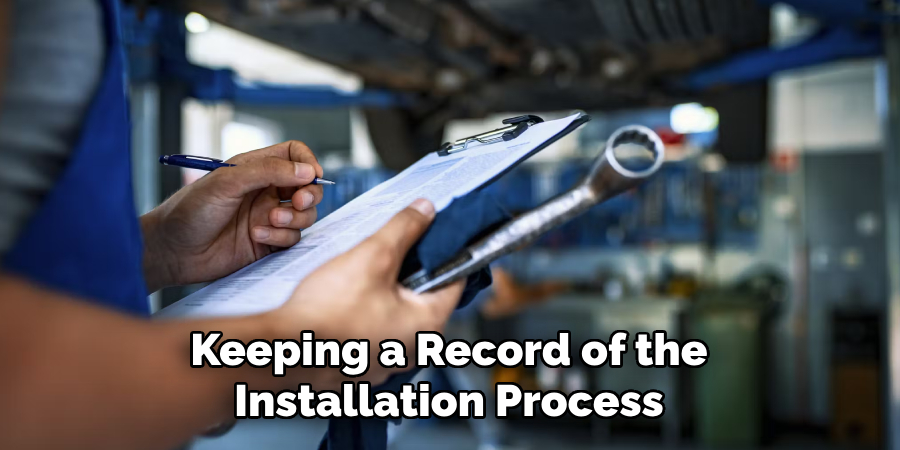
Consider keeping a record of the installation process by taking before-and-after photos, listing any specific tools used, and noting the wire colors connected. Maintaining this documentation can be helpful for future reference, especially if troubleshooting is required or if you plan to revert to the original setup. Additionally, if you encounter any unique installation challenges or have insights that could benefit others, share this information in a vehicle forum or with the manufacturer.
Step 10. Maintain Your Newly Installed Running Lights
Routine maintenance is key to the longevity of your tow mirrors’ running lights. Regularly inspect the lights for any signs of damage or wear, and test them to ensure they are operating correctly. If you notice any issues, such as moisture inside the housing or dimming lights, address them promptly to avoid further complications.
Keep the wiring and connections clean and free of debris, and periodically check to ensure that all connections remain tight and secure. By adhering to these maintenance practices, you can enjoy the enhanced visibility and safety that your running lights provide for many trips to come.
By following these steps and taking the necessary precautions, you can safely and successfully wire running lights on your tow mirrors.
5 Additional Tips and Tricks
- Utilize the Correct Gauge of Wire: Ensure you’re using the appropriate gauge wire for your tow mirror’s running lights. A wire that is too thin could overheat, while one that is too thick might be challenging to work with. Generally, a 16 to 18-gauge should be sufficient for most vehicles.
- Protect Your Connections: Always use heat shrink tubing or electrical tape to insulate your connections. This will help prevent short circuits and corrosion caused by exposure to the elements.
- Follow the Manufacturer’s Instructions: Before starting your wiring project, consult the manufacturer’s manual or instructional guide for your specific tow mirrors. The manufacturer may provide essential details on wiring specifics and safety precautions.
- Keep Your Wiring Neat: Secure wires with zip ties and run them along the existing loom if possible. This keeps the installation looking tidy and prevents damage from moving parts or the elements.
- Test Before Finalizing: Before reassembling everything and considering the job done, connect the battery and test the running lights to ensure everything is working correctly. This allows you to troubleshoot any issues before everything is buttoned up.
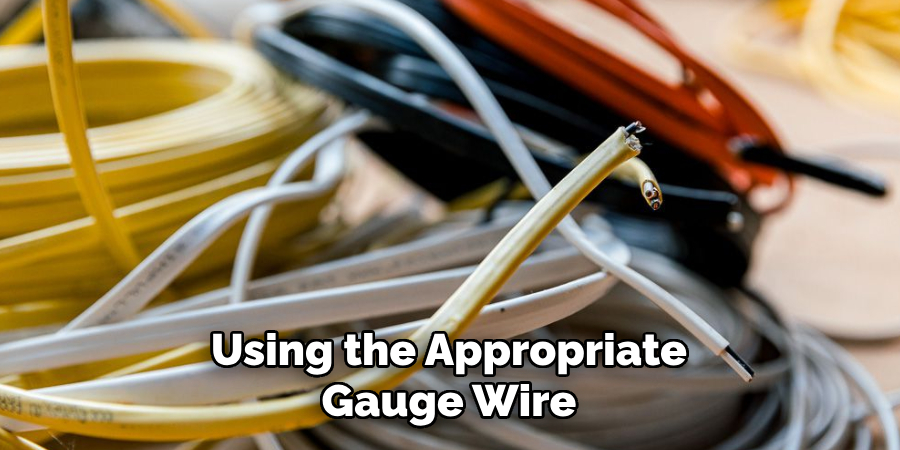
With these additional tips and tricks, you can ensure a successful installation of running lights on your tow mirrors.
6 Things You Should Avoid
- Ignoring Vehicle Electrical Requirements: Bypassing the specific electrical requirements of your vehicle when wiring running lights can lead to malfunctions or even damage to your vehicle’s electrical system. Always keep within the electrical load your vehicle can handle.
- Improper Grounding: Failing to ground the electrical system for your tow mirrors properly can cause intermittent lighting or complete failure. Ensure that your grounding point is clean and provides a good electrical connection.
- Skipping Fuse Protection: Avoid connecting your running lights directly to the power source without a fuse. Fuses protect against electrical fires and equipment damage due to overcurrent conditions.
- Using Unreliable Connectors: Steer clear of low-quality connectors that can corrode or loosen over time. Instead, invest in high-quality connectors that ensure a stable and long-lasting connection.
- Disregarding Local Laws and Regulations: It’s essential to understand and follow the requirements set forth by law regarding installing additional lights on vehicles to avoid fines or legal issues. Some areas may have restrictions on the type of lights used or the manner in which they are installed.
- Working Without Proper Tools: Attempting to wire running lights without the necessary tools can lead to frustration and possible damage to your vehicle. Make sure you have the appropriate tools before beginning the installation process.
By avoiding these common mistakes, you can ensure a safe and successful installation of running lights on your tow mirrors.
How Do You Use a Towing Mirror?
Towing mirrors are an essential accessory for those who regularly tow trailers, boats, or other large loads with their vehicles. These mirrors provide additional visibility and allow you to see behind your vehicle and the trailer you tow simultaneously. To use a towing mirror effectively, follow these simple steps:
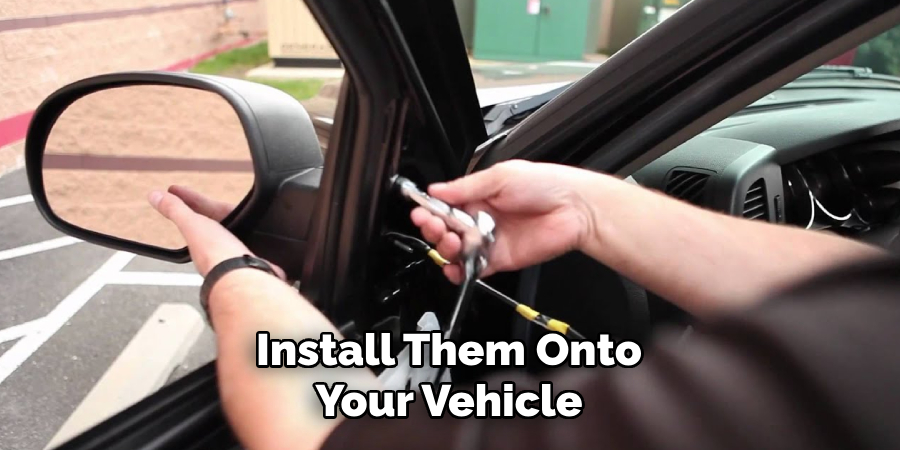
- Install the Towing Mirrors: If you do not already have towing mirrors, the first step is to install them onto your vehicle. Follow the manufacturer’s instructions for proper installation and ensure they are securely attached.
- Adjust the Mirrors: Once installed, adjust the mirrors’ angle and positioning until you have an unobstructed view of both behind your vehicle and your trailer simultaneously.
- Extend the Mirrors: Many towing mirrors have adjustable arms that allow you to extend them further out from your vehicle, providing a wider view. Extend the mirrors until they give you the best possible view of both behind and alongside your trailer.
- Test the Mirrors: Before hitting the road, it’s crucial to test the towing mirrors to ensure they are adjusted correctly and provide adequate visibility while driving.
- Be Mindful of Blind Spots: Although towing mirrors provide a more comprehensive view, they do not eliminate blind spots. Be mindful of any remaining blind spots, and use your vehicle’s side mirrors and turning signals to help ensure safe lane changes.
By following these steps, you can effectively use towing mirrors to enhance your visibility while towing large loads. Always adjust the mirrors accordingly when switching between different types and sizes of trailers to ensure the best possible view.
Do Clip-on Tow Mirrors Work?
Clip-on tow mirrors are a popular choice for many drivers who need temporary towing capabilities without the commitment to permanent hardware. These mirrors are designed to clip over your existing vehicle’s side mirrors, providing extended visibility when towing trailers, caravans, or boats. Despite being temporary, when installed correctly, clip-on tow mirrors can be quite stable and offer a sufficient field of vision to monitor your trailer and assist with safe driving.
However, it’s important to select high-quality clip-on mirrors that are designed for the make and model of your vehicle to ensure the best fit and minimal vibration. Additionally, while they do provide extended visibility, they may offer less viewing range than permanently installed tow mirrors and are best suited for occasional rather than regular towing.
What Should You See in Towing Mirrors?
Proper use of towing mirrors is crucial for safe driving while towing. In well-adjusted towing mirrors, you should see:
- The Rear Corners of Your Trailer: This is essential for maneuvering in tight spaces and ensuring you’re not at risk of hitting objects or other vehicles.
- Traffic Behind You: A good field of vision of the traffic behind your trailer allows for safer lane changes and better awareness of your surroundings.
- Side Views of the Trailer: Observing your trailer’s sides helps monitor clearance from obstacles and other vehicles and maintains alignment on the road.
- Blind Spots: Although not eliminated, your towing mirrors should minimize the blind spots on both sides of your vehicle.
By ensuring your towing mirrors are correctly adjusted to see these areas, you can tow more confidently, knowing you have a comprehensive view of the area around your vehicle and trailer.
Conclusion
In conclusion, how to wire running lights on tow mirrors requires attention to detail and adherence to best practices. By following the outlined tips and steering clear of common pitfalls, you can achieve a secure and effective installation that enhances visibility and safety without compromising the integrity of your vehicle’s electrical system.
Consulting with a professional is always advisable if you encounter any uncertainties during the process. Safe and proper installation abides by legal regulations and ensures that your vehicle functions optimally while on the road.
Hopefully, this guide has provided you with the necessary knowledge and tips to wire running lights on your tow mirrors successfully.

About
JeepFixes Team is a skilled author for Jeep Fixes, bringing 6 years of expertise in crafting a wide range of jeep fixes. With a strong background in jeep fixes work, JeepFixes Team’s knowledge spans various types of fixtures, from decorative pieces to functional hardware, blending precision with creativity. His passion for jeep fixes and design has made him a trusted resource in the industry.
Professional Focus:
Expert in Jeep Fixes : JeepFixes Team aesthetic specializes in creating durable and innovative jeep fixes, offering both appeal and functionality. His work reflects a deep understanding of jeep fixes techniques and materials.
Sustainability Advocate : He is dedicated to using sustainable practices, ensuring that every fixture is crafted with eco-friendly methods while maintaining high-quality standards.
In his writing for jeep fixes, JeepFixes Team provides valuable insights into the latest trends, techniques, and practical advice for those passionate about jeep fixes, whether they are professionals or DIY enthusiasts. His focus on combining artistry with engineering helps others discover the true potential of jeep in design.
